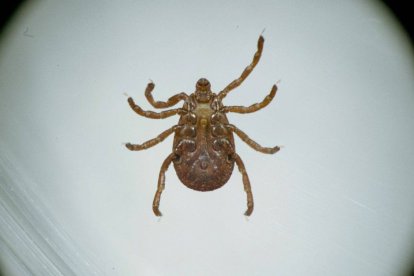CDC warns of rise in potentially deadly meat allergy from tick bite
At least 450,000 undiagnosed Americans may be living with the syndrome.

Los CDC alertan sobre el auge de una alergia potencialmente mortal a la carne por la picadura de una garrapata
The Centers for Disease Control and Prevention reported that alpha-gal syndrome (AGS), a rare and potentially life-threatening allergy to red meat and other foods, is an emerging public health problem. The disease is caused by a tick bite, which transmits a sugar molecule to the body called alpha-gal. This triggers, in some citizens, an allergic and potentially fatal reaction.
The latest study looked into 110,000 people with the syndrome. However, the agency explained that at least 450,000 undiagnosed Americans may be living with the condition. "Our 110,000 suspected cases of alpha-gal syndrome represent those that found the health care provider that did properly send off for the antibody test," said Johanna Salzer, Ph.D., CDC disease and veterinary ecologist and author of both studies.
Problems in diagnosing the disease
Dr. Ann Carpenter, epidemiologist and lead author of one of the published studies, explained that the most important thing is for people and medical personnel to be informed about the disease in order to diagnose it in time and avoid health complications in patients. "It is critical for physicians to be aware of alpha-gal syndrome so they can properly evaluate, diagnose and manage their patients and also educate them about tick bite prevention to protect them," Carpenter said.
The Centers for Disease Control and Prevention consulted with physicians and nurses across the country and half of them had never heard of the allergy. About one-third said they are "not very confident" in their ability to diagnose or treat patients with AGS, and five percent felt very confident in their knowledge of the syndrome.
Symptoms who suffer from AGS may develop hives or an itchy rash, nausea or vomiting, heartburn or indigestion, diarrhea, cough, shortness of breath or difficulty breathing, drop in blood pressure, swelling of the lips, throat, tongue or eyelids, dizziness, fainting or severe stomach pain. This generally appears 2-6 hours after ingesting food or other exposure to alpha-gal-containing products.
Although the tick is found mainly in the southern and eastern parts of the country, experts warn that its presence is expanding due to "climate change." These ticks can be identified by a white spot on their back.
RECOMMENDATION





















